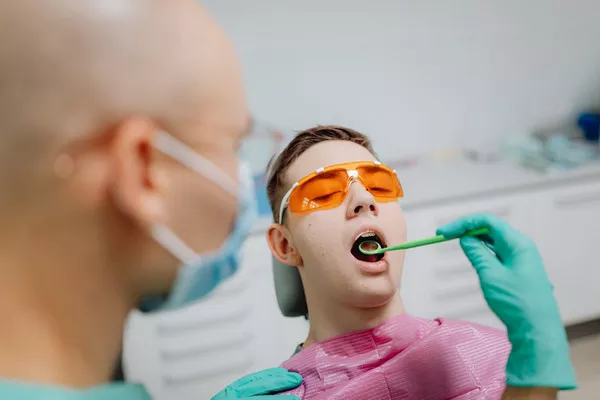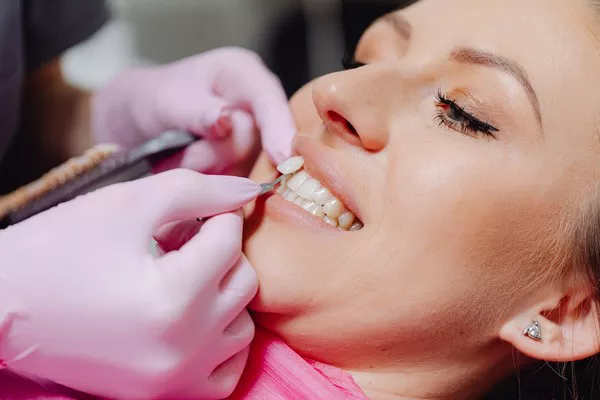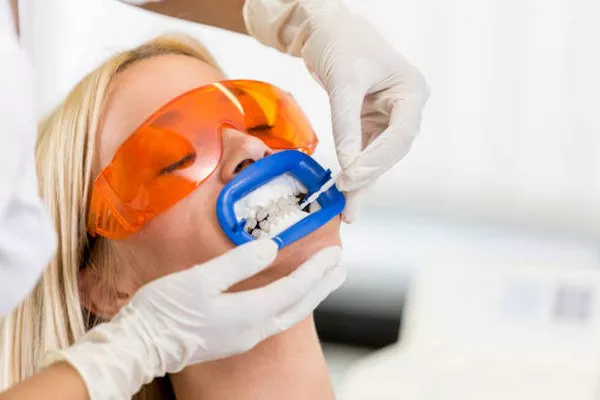Gum recession, also known as gingival recession, is a common dental condition characterized by the gradual pulling away of gum tissue from the teeth, exposing the roots. This process can lead to various oral health issues if left untreated. In this article, we will delve into the definition, symptoms, common causes, diagnosis, treatment options, prevention tips, and complications associated with gum recession.
Definition of Gum Recession
Gum recession occurs when the margin of the gum tissue surrounding the teeth wears away or pulls back, exposing more of the tooth or its root. This often results in visible notching at the gum line and can lead to tooth sensitivity and other complications. As the gum tissue recedes, it can create gaps or pockets between the teeth and gums, making it easier for bacteria to accumulate and cause further damage.
see also: Does gingivitis cause tooth sensitivity?
Symptoms of Gum Recession
Tooth Sensitivity: One of the early signs of gum recession is increased tooth sensitivity, especially to hot or cold temperatures.
Visible Tooth Roots: As the gum tissue recedes, the roots of the teeth become exposed, giving the teeth a longer appearance.
Changes in Gum Line: The gum line may appear uneven or recede, creating a notch or pocket around the affected teeth.
Bleeding Gums: Gums that bleed easily, particularly during brushing or flossing, can indicate gum recession.
Loose Teeth: Advanced gum recession can lead to loose or shifting teeth due to decreased support from the surrounding gum and bone tissue.
Common Causes of Gum Recession
Periodontal Diseases: Gum recession is often a consequence of periodontal diseases such as gingivitis and periodontitis. These bacterial infections can destroy gum tissue and the underlying bone that supports the teeth.
Aggressive Tooth Brushing: Brushing too hard or using a hard-bristled toothbrush can contribute to gum recession by wearing away the enamel and irritating the gums.
Poor Oral Hygiene: Inadequate brushing and flossing allow plaque and tartar to accumulate along the gum line, increasing the risk of gum disease and recession.
Tobacco Use: Smoking or chewing tobacco not only weakens the immune system but also restricts blood flow to the gums, making them more susceptible to recession.
Genetic Predisposition: Some individuals have a genetic predisposition to gum recession, making them more prone to developing the condition even with proper oral hygiene.
Hormonal Changes: Hormonal fluctuations during puberty, pregnancy, or menopause can make the gums more sensitive and prone to recession.
Misaligned Teeth or Bite: Teeth that are crooked or misaligned can exert excessive force on the surrounding gum tissue, leading to recession.
Oral Piercings: Jewelry in the lip or tongue can rub against the gums, causing irritation and contributing to gum recession.
Diagnosis and Tests
Dentists diagnose gum recession through a comprehensive dental examination, which may include:
Visual Inspection: The dentist will visually inspect the gums for signs of recession, such as visible tooth roots or changes in the gum line.
Periodontal Probe: A periodontal probe is a small, thin instrument used to measure the depth of the gum pockets around each tooth. Deeper pockets indicate more advanced gum recession.
X-rays: X-rays may be taken to assess the extent of bone loss and identify any underlying issues such as tooth decay or abscesses.
Treatment Options
Treatment for gum recession depends on the severity of the condition and its underlying cause. Common treatment options include:
Non-surgical Treatments:
Scaling and Root Planing: Also known as deep cleaning, this procedure involves removing plaque and tartar from the teeth and root surfaces to promote gum reattachment.
Antibiotics: In cases of gum disease, antibiotics may be prescribed to eliminate bacterial infection and prevent further damage to the gums and bone.
Surgical Treatments:
Gum Grafting: During a gum grafting procedure, tissue from another part of the mouth (usually the palate) is used to cover exposed tooth roots and restore gum tissue.
Pocket Reduction Surgery: In advanced cases of gum disease, surgery may be necessary to reduce the depth of gum pockets and promote gum tissue regeneration.
Lifestyle Changes:
Improving Oral Hygiene: Practicing proper brushing and flossing techniques and using antimicrobial mouth rinses can help prevent further gum recession.
Quitting Tobacco: Quitting smoking or chewing tobacco can significantly reduce the risk of gum disease and recession.
Addressing Misaligned Teeth: Orthodontic treatment may be recommended to correct misaligned teeth or bite issues and alleviate pressure on the gums.
see also: Can gingivitis cause teeth to shift?
Prevention Tips
To prevent gum recession and maintain optimal oral health, consider the following tips:
Use a Soft-Bristled Toothbrush: A soft-bristled toothbrush is gentler on the gums and less likely to cause irritation or recession.
Practice Gentle Brushing Techniques: Brush your teeth using gentle, circular motions rather than vigorous scrubbing to avoid damaging the gums.
Floss Regularly: Flossing helps remove plaque and food particles from between the teeth and along the gum line, reducing the risk of gum disease.
Attend Regular Dental Check-ups: Visit your dentist at least twice a year for professional cleanings and oral examinations to detect and address any issues early on.
Maintain a Healthy Lifestyle: Eat a balanced diet, limit sugary snacks and beverages, and avoid tobacco products to support overall oral health.
Complications of Untreated Gum Recession
Failure to address gum recession in a timely manner can lead to various complications, including:
Bone Loss: Advanced gum recession can result in significant bone loss around the affected teeth, compromising their stability and increasing the risk of tooth loss.
Tooth Mobility: As the supporting bone deteriorates, the affected teeth may become loose or mobile, affecting bite function and overall oral health.
Tooth Loss: Without adequate support from the gums and bone, affected teeth may eventually become loose and require extraction.
Gum Infections: Exposed tooth roots are more susceptible to infection, leading to gum inflammation, pain, and the potential for abscess formation.
When to See a Dentist
If you experience any symptoms of gum recession, such as tooth sensitivity, visible tooth roots, or changes in the gum line, it is essential to consult a dentist promptly. Early detection and intervention can help prevent further damage and preserve your oral health. Additionally, maintain regular dental check-ups to monitor your oral health and address any concerns proactively.
Conclusion
Gum recession is a common dental condition that can have significant consequences if left untreated. By understanding the causes, symptoms, diagnosis, and treatment options associated with gum recession, you can take proactive steps to protect your oral health and prevent complications in the future. Remember to practice good oral hygiene, attend regular dental check-ups, and seek professional dental care as needed to maintain a healthy smile for years to come.
FAQs About Receding Gums
1. Can you fix receding gums?
Receding gums cannot be fully reversed once the gum tissue has been lost. However, several treatments can help manage and improve the condition:
Professional cleaning: Removing plaque and tartar can prevent further gum recession.
Scaling and root planing: A deep cleaning procedure that removes bacteria from beneath the gums.
Gum graft surgery: This involves taking tissue from another part of your mouth (or using a graft material) to cover exposed roots and restore the gum line.
Pinhole surgical technique (PST): A minimally invasive procedure that loosens gum tissue and slides it over the receded part.
Good oral hygiene: Maintaining proper brushing and flossing techniques can prevent further recession.
2. How do you stop gum recession ASAP?
To stop gum recession quickly, follow these steps:
Improve oral hygiene: Brush twice daily with a soft-bristled toothbrush and fluoride toothpaste. Floss daily to remove plaque between teeth.
Avoid aggressive brushing: Use gentle, circular motions rather than harsh, back-and-forth scrubbing.
Use a mouthwash: An antibacterial mouthwash can help reduce plaque and bacteria.
Quit smoking: Smoking can exacerbate gum problems and slow healing.
Visit your dentist: Regular dental check-ups and cleanings can catch gum issues early. If you notice signs of gum recession, consult your dentist promptly for advice and treatment options.
3. How to increase gum growth?
While it’s challenging to regrow gum tissue naturally, some treatments can encourage healthier gums and potentially promote slight regrowth:
Good oral hygiene: Consistent brushing and flossing prevent further recession.
Use a therapeutic mouthwash: Certain mouthwashes can help reduce bacteria and support gum health.
Healthy diet: Eating foods rich in vitamins C and D, as well as omega-3 fatty acids, can support gum health.
Avoid irritants: Reducing the intake of acidic foods and beverages and avoiding tobacco can help maintain healthy gums.
Consult your dentist: Professional treatments like scaling, root planing, and gum grafts can help manage gum recession.
4. Does salt water help receding gums?
Salt water can help manage the symptoms of receding gums but won’t reverse the condition. Benefits of salt water rinses include:
Reducing bacteria: Salt water has antibacterial properties that can help reduce bacteria in the mouth.
Soothing inflammation: Salt water can reduce swelling and soothe gum inflammation.
Promoting healing: Rinsing with salt water can aid in the healing of minor wounds and sores in the mouth.
To make a salt water rinse, dissolve half a teaspoon of salt in a cup of warm water and rinse your mouth for about 30 seconds, then spit it out. Repeat this 2-3 times daily, especially after meals and before bed.
You Might Be Interested In





























